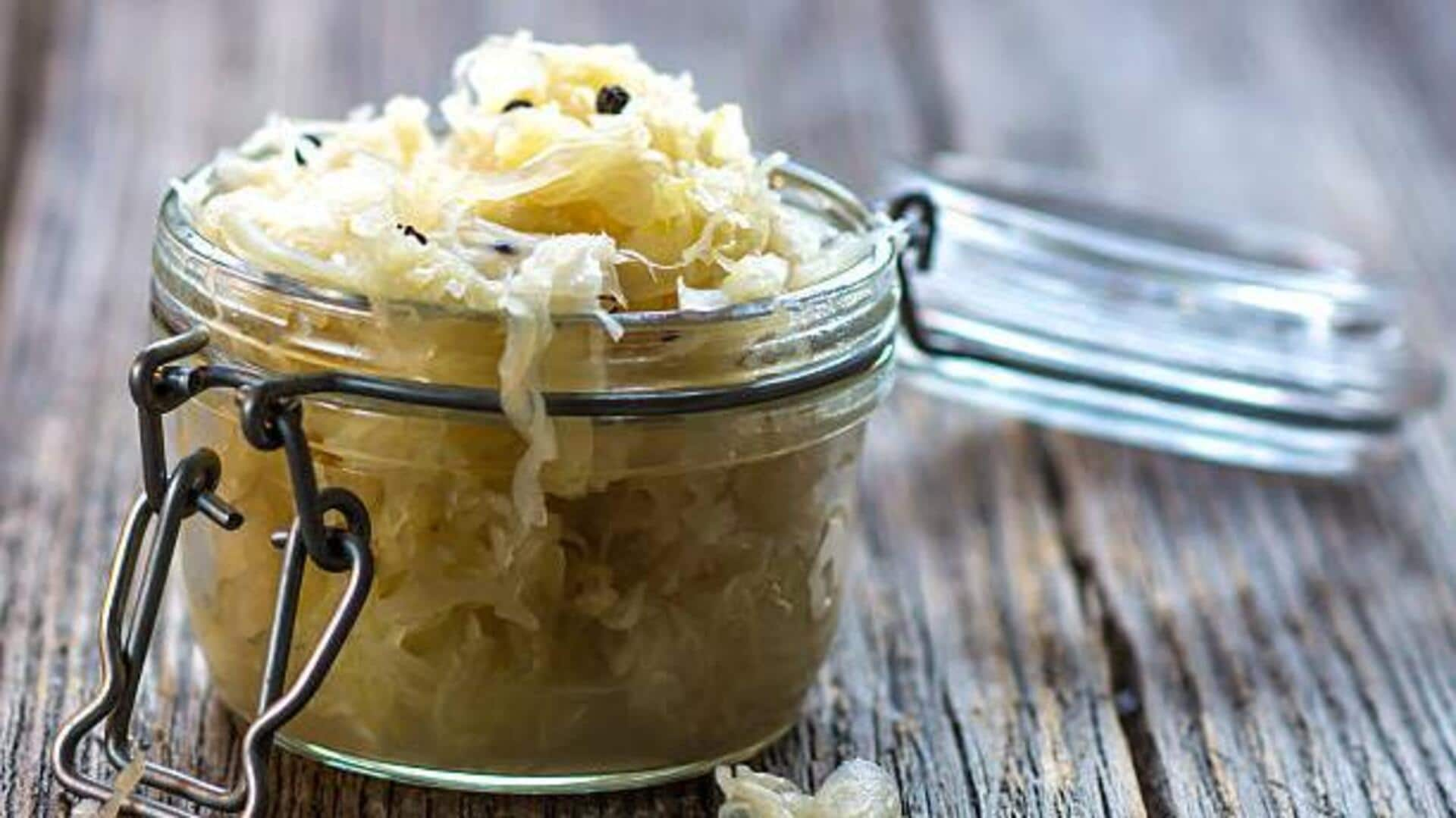
How to make the perfect sauerkraut
What's the story
Making sauerkraut at home can be a rewarding experience. It offers a delicious, healthy addition to your meals. With just cabbage, salt and time, you can create this traditional fermented dish. However, achieving the perfect texture and flavor requires some know-how. Here are five fermenting hacks that will help you master the art of homemade sauerkraut. These tips focus on ensuring consistency in taste/quality. They make the process as straightforward as possible.
Tip 1
Choose the right cabbage
Choosing the right kind of cabbage is essential for fermenting success. Go for fresh, firm heads of green or red cabbage with tightly packed leaves. Skip wilted or damaged outer leaves as they can impact the quality of the final product. Organic cabbages work best as they are less likely to have pesticides that could inhibit fermentation.
Tip 2
Salt ratio matters
The salt-to-cabbage ratio is critical for a successful fermentation process. It's advisable to stick to about 2% salt by the weight of the cabbage. This exact amount helps in preserving the sauerkraut correctly and resulting in rich flavors. If the salt content falls too low, it may not prevent spoilage properly. On the flip side, too much salt can hinder fermentation, yielding unsatisfactory results.
Tip 3
Pack tightly in jars
Packing your shredded cabbage tightly into jars helps eliminate air pockets that could cause spoilage during fermentation. Use a wooden spoon or tamper to press down firmly on each layer until liquid covers all solids completely before sealing jars with lids loosely enough so gases produced during fermentation can escape without letting contaminants enter.
Tip 4
Maintain consistent temperature
Temperature matters a lot in how fast your sauerkraut ferments. Try to keep it around 18 degrees Celsius-22 degrees Celsius (64 degrees Fahrenheit-72 degrees Fahrenheit) during this time if you can. Fluctuations may yield uneven results, like mushy textures instead of the crisp ones preferred most often by enthusiasts alike.
Tip 5
Taste regularly during fermentation
Tasting regularly lets you monitor your progress closely, ensuring that you're getting the best flavors over time, instead of waiting till the end only to realize something went wrong somewhere! Start sampling after about a week, and then every few days onwards, modifying duration according to how tangy you want the final product to be, ultimately deciding when you're ready to enjoy a fully matured batch of homemade goodness yourself!